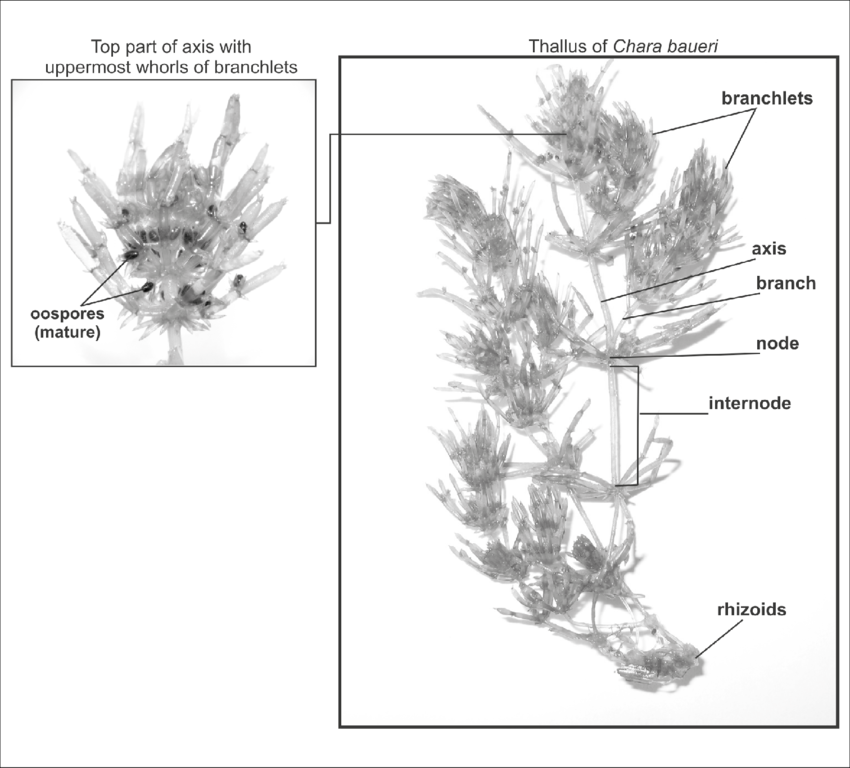
Chagaras are diverse organisms that play critical roles in ecosystems worldwide. They are essential for ecological balance, biodiversity, and provide various ecosystem services like pollination and seed dispersal.
Introduction:
Chagaras, a group of organisms rich in diversity and ecological significance, play pivotal roles in various ecosystems around the globe. This comprehensive article explores their taxonomy, habitat, behavior, ecological importance, and cultural and economic value, providing an in-depth understanding of these fascinating creatures.
An Overview of Chagaras:
Understanding the Term:
The term “Chagaras” refers to a collection of species characterized by their distinct morphological and behavioral traits.
This term is used to describe a wide variety of organisms, each contributing uniquely to their environments. The precise definition and categorization of Chagaras can vary, reflecting their complex nature and the diverse ecosystems they inhabit.
Taxonomic Classification:
Chagaras belong to a specific taxonomic classification that helps scientists understand their evolutionary relationships and ecological roles. Typically, they are classified within a certain order or family, but the exact classification can differ among species. This classification is crucial for studying their biology, behavior, and interactions with other organisms.
Taxonomy involves various levels of classification, including Kingdom, Phylum, Class, Order, Family, Genus, and Species. For Chagaras, understanding their taxonomic position can provide insights into their evolutionary history and biological characteristics, aiding in their identification and study.
Morphological Features:

The morphological features of Chagaras are diverse and distinctive, helping them adapt to their environments and fulfill their ecological roles. These features include specific body structures, coloration, and physical adaptations that vary among species. For example, some Chagaras may have specialized limbs for climbing, while others might possess unique mouthparts for feeding.
Detailed study of these morphological traits is essential for distinguishing between different species of Chagaras and understanding their evolutionary adaptations. These features not only aid in their survival but also influence their interactions with other species and their environment.
Habitat and Distribution:
Tropical Regions:
Chagaras are predominantly found in tropical regions, where the warm, humid climate and rich biodiversity provide ideal conditions for their survival. These areas, such as rainforests and tropical grasslands, support a high density and diversity of Chagara species. The complexity of tropical ecosystems offers numerous niches for Chagaras, promoting their adaptation and evolution.
Tropical regions are characterized by their stable temperatures and high rainfall, creating lush environments that support a wide range of flora and fauna. Chagaras, with their diverse adaptations, thrive in these conditions, contributing to the ecological complexity and stability of tropical ecosystems.
Global Distribution:
While tropical regions are primary habitats for Chagaras, they also inhabit various other parts of the world. Their adaptability allows them to thrive in a range of environments, from temperate zones to subtropical regions. This global distribution is a testament to their ecological versatility and evolutionary success.
Understanding the global distribution of Chagaras involves studying their habitat preferences, environmental tolerances, and dispersal mechanisms. This knowledge is crucial for conservation efforts, as it helps identify key habitats and regions that require protection to ensure the survival of diverse Chagara species.
Ecological Niche:
Chagaras occupy specific ecological niches within their habitats, fulfilling essential roles that contribute to the functioning and stability of ecosystems. These niches can vary widely among species, reflecting their diverse adaptations and ecological interactions. Chagaras may act as pollinators, seed dispersers, predators, or prey, each role being vital for ecosystem health.
Studying the ecological niche of Chagaras involves understanding their interactions with other species, their habitat requirements, and their impact on ecosystem processes. This information is crucial for developing conservation strategies that protect not only Chagaras but also the broader ecological communities they support.
Behavior and Lifecycle
Feeding Habits:
The feeding habits of Chagaras are as diverse as their species, influencing their role in the ecosystem and their interactions with other organisms. Some Chagaras are herbivores, feeding on plants and foliage, while others may be carnivores, preying on smaller animals or insects. There are also omnivorous Chagaras that have a varied diet, consuming both plant and animal matter.
Understanding the feeding habits of Chagaras provides insights into their ecological roles and how they influence energy flow and nutrient cycling within ecosystems. These feeding strategies also affect their reproductive success and survival, highlighting the importance of their dietary adaptations.
Reproductive Strategies:
Chagaras exhibit a wide range of reproductive strategies, ensuring the survival and continuation of their species. These strategies can include laying eggs, live births, or complex mating rituals. Some species may produce numerous offspring with minimal parental care, while others invest significant resources in fewer offspring with higher survival rates.
Reproductive behaviors and strategies are crucial for understanding the population dynamics and lifecycle of Chagaras. These strategies are often shaped by environmental factors, such as availability of resources, predation pressure, and habitat conditions, influencing the evolution and adaptation of Chagara species.
Also Read: Geöe – A Comprehensive Overview!
Seasonal Patterns:
Many Chagara species display distinct seasonal patterns in their behavior and lifecycle, influenced by environmental conditions such as temperature, food availability, and daylight hours. These patterns can include seasonal migrations, hibernation, or specific breeding seasons.
Understanding these seasonal behaviors is important for studying the ecological adaptations and survival strategies of Chagaras. These patterns also have implications for their conservation, as changes in environmental conditions due to climate change or habitat destruction can disrupt these seasonal cycles, impacting Chagara populations.
Ecological Significance:
Ecosystem Services:
Chagaras provide numerous ecosystem services that are vital for the health and functioning of ecosystems. These services include pollination, seed dispersal, soil aeration, and nutrient cycling. By performing these roles, Chagaras contribute to the productivity and stability of their habitats.
Ecosystem services provided by Chagaras are essential for maintaining biodiversity and supporting the livelihoods of other species, including humans. Understanding these services helps in appreciating the ecological value of Chagaras and the need for their conservation.
Biodiversity Conservation:
The presence and diversity of Chagaras in an ecosystem are often indicators of ecological health and biodiversity. Chagaras contribute to the complexity and resilience of ecosystems, supporting a wide range of other species. Their conservation is crucial for maintaining
ecological balance and biodiversity.
Efforts to conserve Chagaras involve protecting their habitats, mitigating threats, and promoting sustainable practices. These conservation strategies are essential for ensuring the survival of Chagara species and the ecological communities they support.
Threats and Conservation Status:
Chagaras face various threats, including habitat destruction, climate change, pollution, and over-exploitation. These threats can lead to declines in Chagara populations, making conservation efforts critical. Understanding the conservation status of Chagaras involves assessing their population trends, habitat conditions, and the impact of threats.
Effective conservation strategies require a comprehensive understanding of the challenges facing Chagaras and the measures needed to mitigate these threats. This involves collaboration between scientists, policymakers, and local communities to protect and restore Chagara habitats and ensure their long-term survival.
Cultural and Economic Aspects:
Indigenous Perspectives:

Many indigenous cultures have deep connections with Chagaras, often seeing them as symbols or integral parts of their traditions and practices.
These perspectives offer valuable insights into the sustainable management and conservation of Chagaras. Indigenous knowledge and cultural practices can play a crucial role in promoting the conservation and sustainable use of Chagara species.
Economic Utilization:
Chagaras can have significant economic value, whether through their role in agriculture, as part of the food chain, or through eco-tourism.
Sustainable utilization of Chagaras can support local economies while promoting conservation. This includes harvesting practices, the use of Chagaras in traditional medicine, and their importance in pollinating crops.
Sustainable Practices:
Implementing sustainable practices is key to ensuring the long-term survival of Chagaras. This includes habitat preservation, pollution control, and sustainable harvesting practices.
Engaging communities in conservation efforts can lead to more effective and lasting outcomes. Sustainable management practices ensure that Chagaras continue to provide ecological, cultural, and economic benefits for future generations.
FAQ’s
1. What are Chagaras?
Chagaras are a group of diverse organisms characterized by distinct morphological and behavioral traits, playing essential roles in various ecosystems.
2. Where are Chagaras primarily found?
Chagaras are predominantly found in tropical regions but can also inhabit temperate and subtropical areas globally.
3. What ecological roles do Chagaras fulfill?
Chagaras contribute to pollination, seed dispersal, soil aeration, and nutrient cycling, supporting ecosystem productivity and stability.
4. What are the main threats to Chagaras?
Chagaras face threats from habitat destruction, climate change, pollution, and over-exploitation, necessitating conservation efforts.
5. How do indigenous cultures view Chagaras?
Many indigenous cultures see Chagaras as integral to their traditions and practices, providing insights into sustainable management and conservation.
Conclusion
Chagaras are vital components of many ecosystems, contributing to ecological balance, biodiversity, and cultural heritage. Understanding their taxonomy, habitat, behavior, and significance helps in appreciating their role and the need for their conservation. Sustainable practices and informed conservation strategies are essential for protecting these remarkable organisms and ensuring they continue to thrive for future generations. By recognizing the importance of Chagaras and taking action to conserve them, we can help maintain the health and resilience of our planet’s ecosystems.







